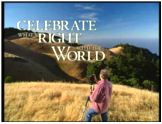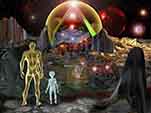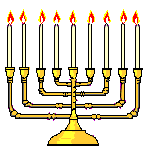The discovery of various Roman coins around the U.S has led some researchers to conclude that America was the final destination for a wave of people who came not as colonists but as refugees. The coins, which have been found largely around the Mississippi-Arkansas-Ohio-Missouri river systems, cover the later periods of Rome and particularly the reigns of Antoninus Pius, Gallienus and Emperor Tetricus. A period of Roman rule that Gibbon describes as a time of "uninterrupted confusion and calamity." So it's quite possible that these coins were left by what were in effect boat people seeking refuge from a disintegrating Empire.
What's significant here though is the fact that these finds have not strictly been confined to the Mississippi-Arkansas-Ohio-Missouri river systems. Although largely confined to the vicinity of these river systems Roman coins have been found across North America: from Arkansas to Alabama, from Missouri to Oklahoma. Maybe, indicating a wave of refugees? Or, a series of exploratory ventures? Or maybe even both?
True to form modern academia and its various experts have largely ignored these finds or simply brushed them aside as hoaxed. Thus dismissing such tantalising glimpses of the past as an Egyptian-minted Gallenius coin, found in a stream bed by Geology students near Black Mountain, North Carolina. Or the even more fascinating "Rio Grande Tablet." Written in style current in the Roman colony of Libya around 300AD, the tablet proffers a poignant insight into the past. Inscribed on it is a prayer to the Roman deity Mithras, dated the 6th year of an unnamed Emperor's reign, a prayer that asks for aid and relief for a sick and lost party. Whether deserters or early explorers some researchers have concluded that the Rio Grande Tablet is the work of a lost Libyan detail of the Mithras worshipping Roman army.
The notion that elements from Rome's Carthaginian colony in Libya may have visited America has been further underlined by the Burrow's Cave find. Amongst the thousands of artefacts in the collection is the depiction of a Negroid face carved on a stone tablet in a distinctly Roman style. Predictably it has been virtually ignored by the various authorities. After all the idea that North African's were visiting North America over a thousand years before Columbus challenges much of written history.
So Burrows cave has either been dismissed as a hoax or ignored by modern academia, yet in the words of Ancient American magazine it is the archaeological "discovery of the century."
The story of Burrows cave began in 1982 when Russell Burrows was out searching for American civil war artefacts in southern Illinois. Using a common metal-detector he claims to have discovered an underground chamber full of ancient artefacts. Numbering more than seven thousand the artefacts largely consist of stones inscribed with the portraits of ancient Egyptians, Carthaginians, Romans and Hebrews; many of which were inscribed with script resembling Phoenician or ancient Semitic writing.
Although many of the relics found in Burrows Cave have been examined Burrows himself has not as yet revealed the exact location of his find, partly because of the derision that greeted his claims. However he has promised to reveal the exact location of the find in the near future and when he does we will update you.
In the meantime though it must be said that if you thought the idea of Knights Templar or even Romans in America was outlandish then we suggest that you take a deep breath. For as we researched this article the evidence emerged which is even more at odds with the conventional notions of American history. For while the ancient Americas may well have played host to many visitors from many different lands there is one in particular who stands out. An individual whose presence in America, if in fact he were there, is likely to shatter many beliefs: historical, cultural, metaphysical and religious.
Across the Americas, north and south, there are oral traditions and stories that are remarkably similar in overall theme. They tell of the coming of a pale man, some even say a white man; known variously as the Dawn God, the Peacemaker, the Pale One and the East Star Man: he was given this latter name because according to some stories he had come across the sea from the east. In other words he had come across what we know today as the Atlantic from either Europe or North Africa.
Whatever he was called though his arrival left a deep impression on those peoples and cultures he visited. Prior to his appearance some tribes in the America's, more particularly in south or Central America, had practised blood sacrifice. The arrival of the Pale One, or Quetzalcoatl, as the Maya knew him, changed that. He taught new rituals and ceremonies some of which remain to this day; such as the smoking of sacred pipes, which for some tribes replaced blood sacrifice.
Apart from having pale skin he was also distinguished from the indigenous Americans by the fact that he was bearded, a facial feature that is unknown amongst Native Americans. Moreover he is said to have dressed completely differently from indigenous Americans, in long flowing robes and sandals.
Some tribes called him the Son of the Great Spirit whilst others refer to him as the son of Yod-hey-vah. Sound familiar? Well this latter name was a phonetic pronunciation he taught as was the name he taught the Algonkin of the Great Lakes when they asked his name. He replied that names meant nothing to him; so they then asked what he was named in childhood when he had lived across the waters. That name, which even today they struggle to pronounce was, he told them: Chee-Zoos, God of the Dawn Light.
The parallels between what is written in the Bible and the stories told by various Native American peoples are uncannily similar. For example, the tribes of Oklahoma tell of a man they call the Healer, who chose from amongst the native people twelve disciples. He told them that he was born across the ocean, in a land where all men were bearded. In this land he was born of a virgin on a night when a bright star shone in the heavens. And, as if to celebrate his birth the heavens opened and down came winged beings of great beauty chanting in praise of Chee Zoos, God of the Dawn Light.
Likewise the Dacootah recall the coming of the pale faced Healer. According to them his name remains sacred and during his time with them he taught rites of purification and . . . baptism.
In the same way the Tribes around the Great Lakes speak of the coming of the Prophet; a pale, bearded man who was, according to their tribal elders, the son of the Great Spirit. A Prophet who appeared to them as a white man and who could heal the lame and sick with his touch.
Their medicine men say that: "all that he touched was enchanted with His god-like power of healing." And that . . . "He came alone. He organized the churches, changed the temples, taught the priesthood."
Elsewhere, across the America's there are similar tales and they all tell the same story: of a god-like white man who travelled across the America's teaching and healing.
At the time of his arrival legend has it that there was a great city situated where the Missouri and the Mississippi run to the Southern sea. One morning it is said that the Prophet came there in a long boat, used by the traders. "The streets," the old legends say, "were covered with flowers strewn in homage on the path before Him as He walked toward the Temple."
All of which is reminiscent Christ's entry into Jerusalem on Palm Sunday, the week before he was crucified, when adoring crowds spread palm leaves before his approaching steps.
The Native stories continue:
"Greatly beloved now was the Pale God, known as the Lord of the Wind and the Water. His every move bespoke his kindness: His very touch revealed His Divinity; and before Him all the people bowed down. Through the rows of worshippers He moved in quiet solemnity, holding up His hand in blessing - that hand with the strange palm marking, for through it was engraved the True Cross which He had taken as His Symbol".
He stayed for some time, say the legends: "though often he rode away with the merchants, or more often walked to distant villages, holding in His hand His great staff, and stopping to speak with all the people, from the aged to the little children."
Of course you may object that these are only stories, the legends and tales of a simple and unsophisticated people. And of course you are right, but it doesn't end there because these stories have been partly substantiated by artefacts found within or in the vicinity of mounds built by the ancestors of modern Native Americans.
The so-called Mound Builders flourished in North America between 200 B.C. and 500 AD. Little is known about them except that they built earthen mounds, often in the shape of birds and animals. With the arrival of settlers from Europe many of these mounds were levelled to make way for new farmland. In the process the mounds and their contents were scattered or ploughed under; then in the early 19th century strange relics were unearthed as new roads were built and forests cleared, and this occurred largely around Michigan, Illinois and Minnesota, areas of much previous mound building.
Amongst the relics recovered have been engraved depictions of the crucifixion and other biblical motifs. Yet despite the fact that many of these discoveries were accompanied by sworn affidavits and written testimony the archaeological authorities of the day largely dismissed them as "fakes." A response that continues to this day.
We honestly don't know whether Christ was physically located in the Americas or simply made an appearance, so to speak, spiritually and thereby inspired the stories, artefacts and inscriptions. Or indeed whether they were inspired by the tales of long forgotten Christian missionaries. Certainly Rudolph Steiner spoke of initiates and mystics around the planet being aware of the events in Palestine at the time of the crucifixion. So this proposition is certainly a possibility but whatever the real explanation it offers a fascinating alternative view of history and Christianity itself.
What's more, as individuals, we may soon be able to explore this possibility for ourselves. According to various tribes, before his departure, the East Star Man said that one day he would return, not in body but in spirit. At this time, he said, the world would be a dark place where evil would reign, however, the pure in heart would perceive his return. In other words what he is said to have told Native Americans is exactly what modern Christians would understand as the "second coming." So if you can lift your head up from the feeding trough of consumer society, or the conveyor belt called work, you may just notice something in the air.
Sources include: http://ancientamerican.com/current.htm
http://www.wolflodge.org/stargate/destiny/HoR.htm
http://www.wolflodge.org/stargate/destiny/HoR2.htm , Rule By Secrecy by Jim Marrs, publ: Harper Collins. The Hiram Key by C. Knight and R. Lomas, publ: Barnes and Noble Books, New York. He walked the Americas, Taylor Hansen, publ: Legend Press, Amherst, Wisconsin. The Decline and Fall of the Roman Empire, Gibbon. Ancient American magazine no. 26 & 33.






































